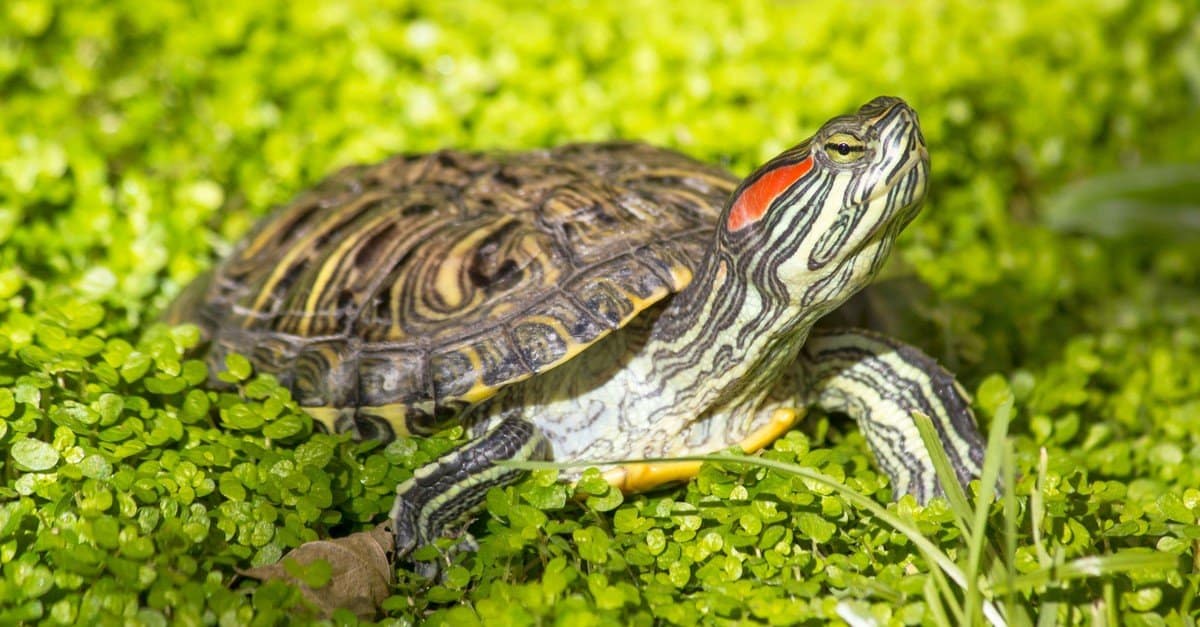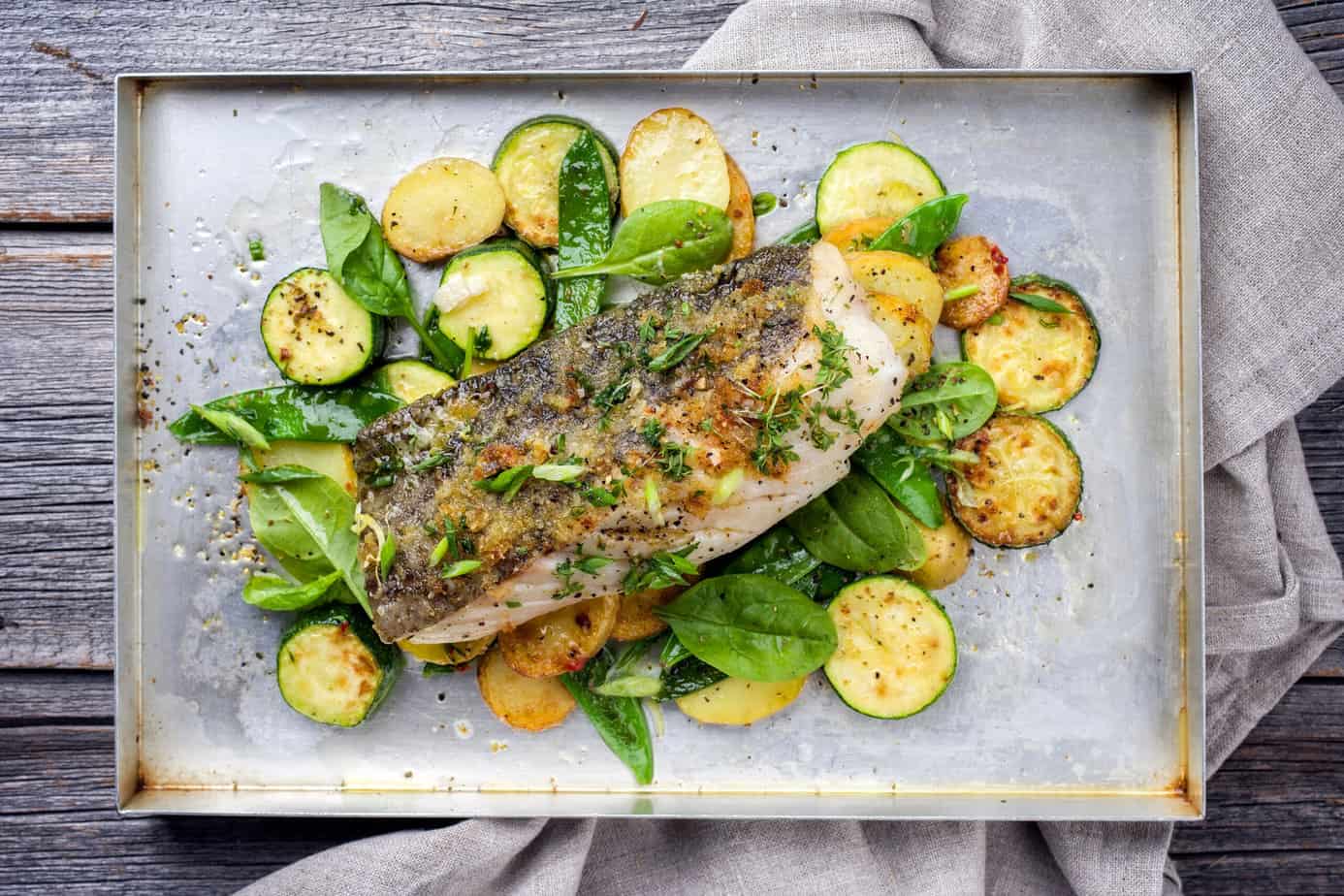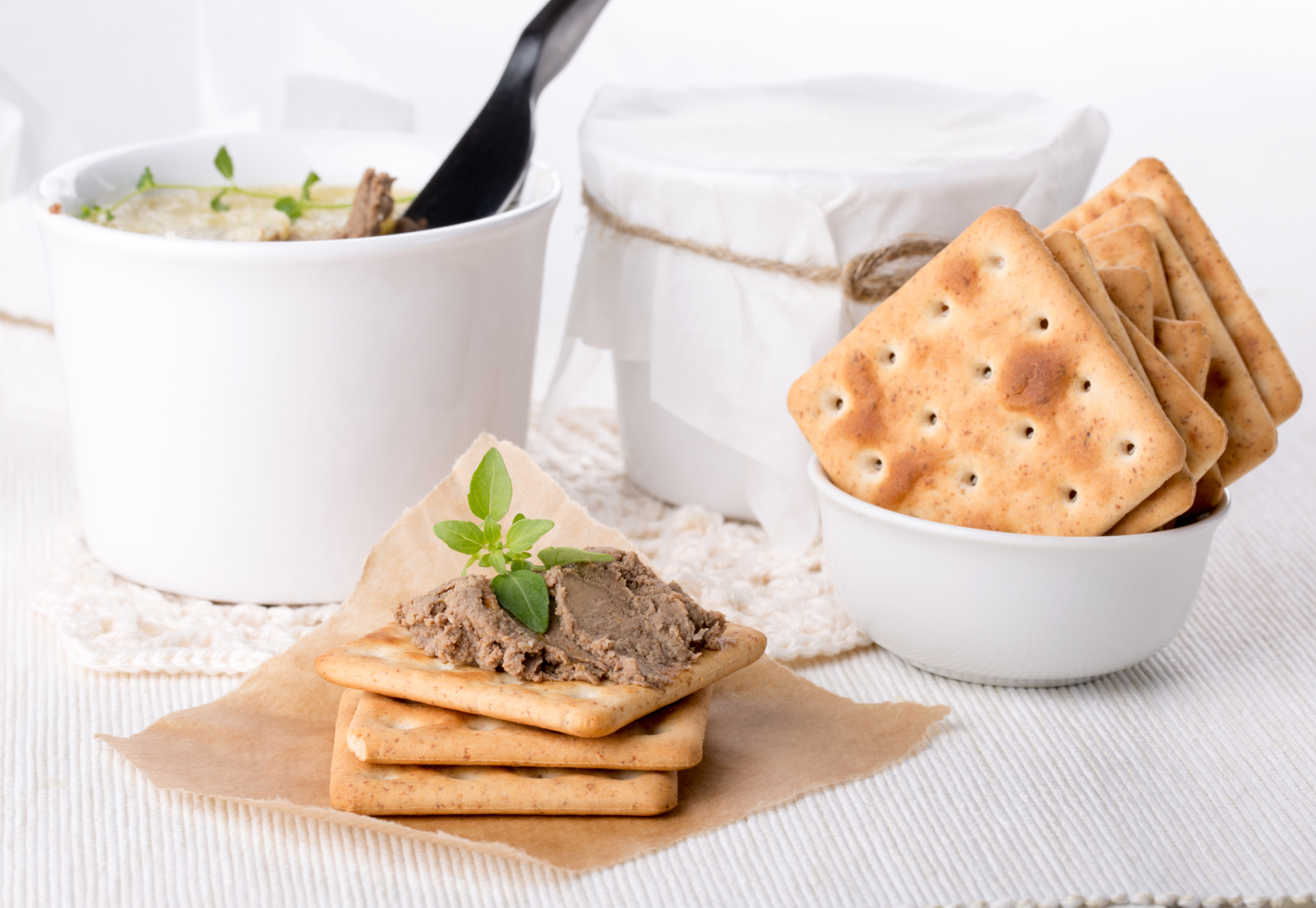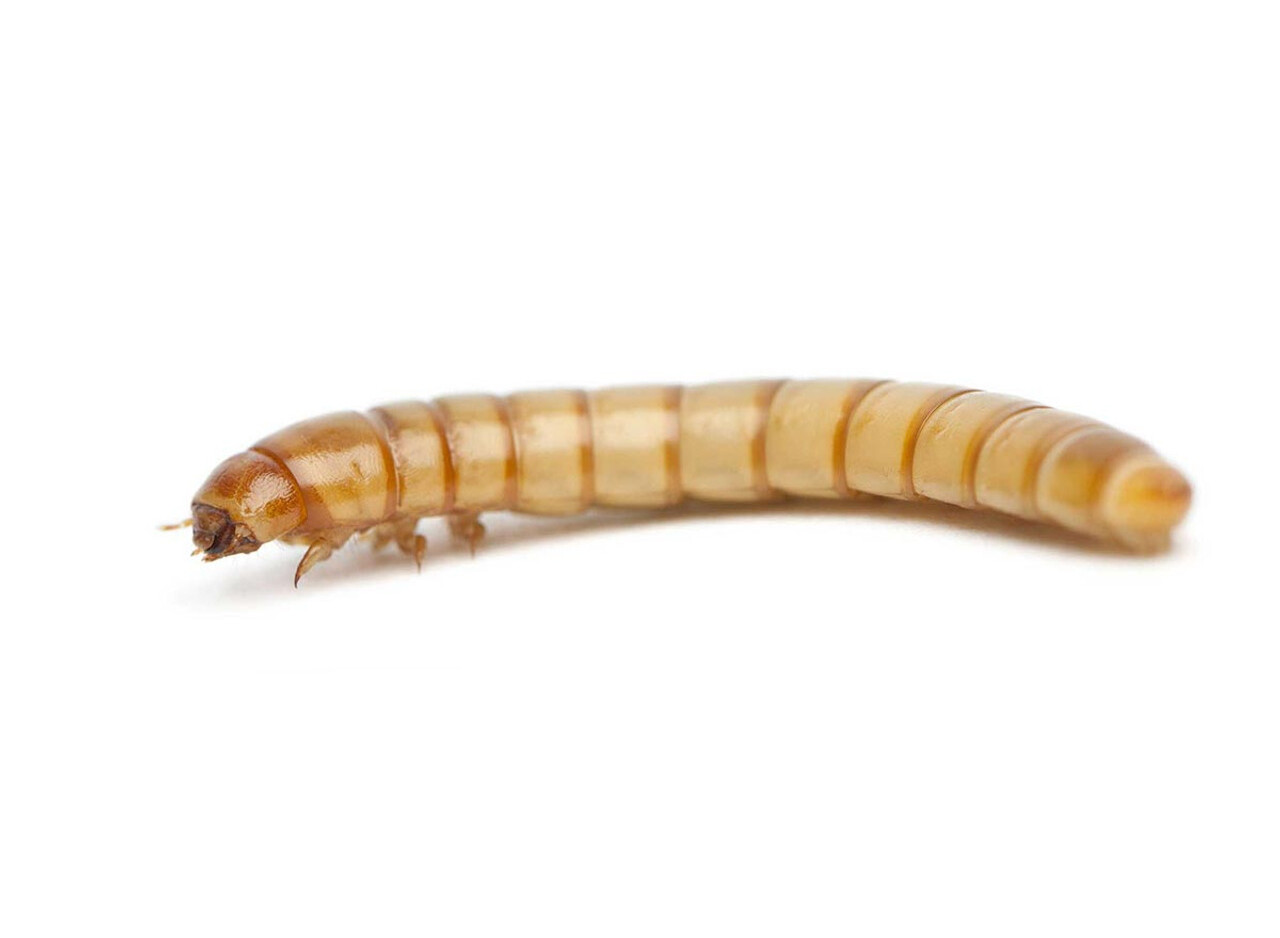Home>Gardening News and Trends>Latest News>What Vegetables Can Fish Eat
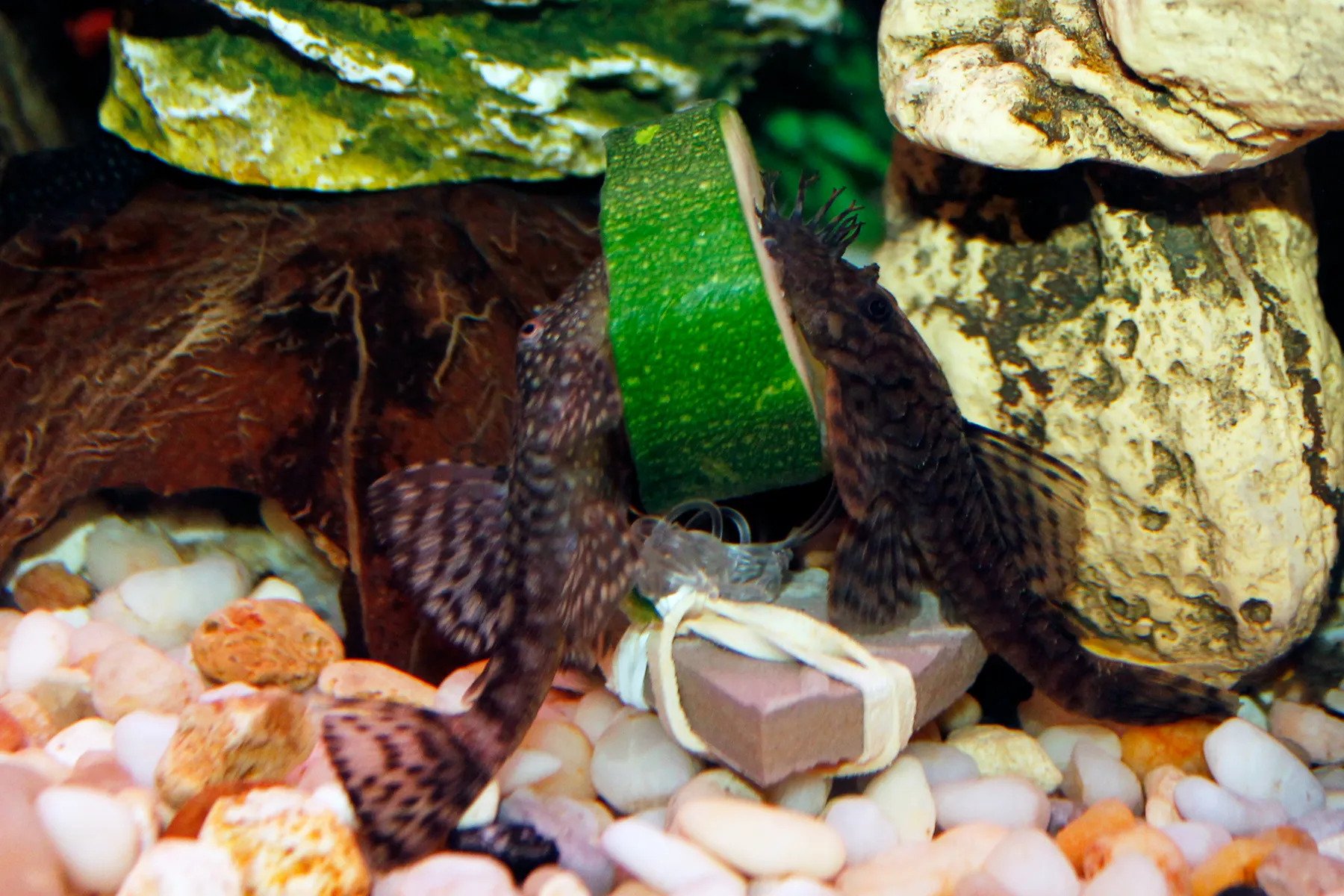

Latest News
What Vegetables Can Fish Eat
Published: October 5, 2023
Discover the latest news on what vegetables fish can eat. Find out which nutritious vegetables are safe and beneficial for your fish's diet.
(Many of the links in this article redirect to a specific reviewed product. Your purchase of these products through affiliate links helps to generate commission for Chicagolandgardening.com, at no extra cost. Learn more)
Table of Contents
Introduction
Fish are known for their diverse dietary needs, and while many people think of them as primarily being carnivorous, they can actually benefit from a variety of vegetables in their diet. Incorporating vegetables into a fish’s diet can provide essential nutrients and contribute to their overall health and well-being. However, not all vegetables are suitable for fish consumption, as some may be difficult to digest or contain harmful substances. Therefore, it is important to understand which vegetables are safe and beneficial for fish to consume.
In this article, we will explore the types of vegetables that fish can safely eat and how these vegetables can contribute to their nutritional needs. We will discuss a variety of vegetables that are not only safe for fish, but also provide them with important vitamins, minerals, and fiber. Whether you have pet fish or are considering adding vegetables to the diet of fish in an aquaponics system, this guide will help you make informed decisions to ensure the well-being of your aquatic friends.
Before we dive into the specific vegetables that fish can eat, it is important to note that the dietary requirements of fish can vary depending on their species. Some fish are herbivorous or omnivorous by nature, while others are carnivorous. Therefore, it is essential to research the specific dietary needs of your particular fish species and consult with experts or your veterinarian to determine the best diet for them.
Understanding the Diet of Fish
Before we delve into the vegetables that fish can eat, it’s important to have a basic understanding of their natural diet. Fish are a diverse group of animals, and their dietary requirements can vary greatly depending on their species, habitat, and feeding habits.
Some fish are predominantly carnivorous, meaning they primarily feed on other animals, such as smaller fish, crustaceans, or insects. These carnivorous fish have specialized teeth and digestive systems adapted to process and extract nutrients from animal tissue efficiently.
On the other hand, some fish species are herbivorous, relying on a plant-based diet for their nutritional needs. These herbivorous fish typically consume algae, aquatic plants, and other plant matter. Their digestive systems are adapted to break down cellulose, a complex carbohydrate found in plant cell walls.
There are also omnivorous fish species that have a more flexible diet and can consume both plant and animal matter. These fish can benefit from a mix of both plant-based and protein-rich foods.
Regardless of their dietary preferences, fish require a balanced diet to thrive. Their dietary needs go beyond just getting energy from food. They also require specific nutrients, such as proteins, carbohydrates, fats, vitamins, and minerals, to support their growth, metabolism, immune function, and overall well-being.
The inclusion of vegetables in a fish’s diet can provide valuable nutritional benefits. Vegetables are rich in vitamins, minerals, and fiber, which can contribute to a fish’s overall health. The high fiber content can aid digestion and promote proper nutrient absorption. Vegetables also contain essential vitamins and minerals that support various bodily functions, such as vitamin C for immune support and calcium for strong bones and scales.
However, it’s important to note that not all fish species can digest and utilize plant matter effectively. Some fish lack the necessary enzymes to break down complex carbohydrates and extract nutrients from plant tissue. In such cases, vegetables may need to be supplemented with other sources of nutrients, such as live or frozen foods.
Understanding the natural diet and specific dietary requirements of your fish species is crucial in determining the appropriate vegetable options to include in their diet. By providing a diet that closely resembles their natural feeding habits, you can ensure the optimal health and longevity of your fish.
Vegetables that Are Safe for Fish
When it comes to selecting vegetables for fish consumption, it is essential to choose options that are safe and appropriate for their specific dietary needs. Here are ten vegetables that are generally considered safe for fish to eat:
- Leafy Greens: Leafy greens such as spinach, kale, and lettuce are excellent choices for herbivorous or omnivorous fish. These greens provide a good source of vitamins A and C and contain fiber that aids digestion.
- Squash: Different varieties of squash, such as zucchini and yellow squash, can be enjoyed by fish. They are low in calories and rich in vitamins and minerals, including potassium and vitamin C.
- Peas: Green peas, whether fresh or frozen, are a nutritious and easily digestible vegetable for fish. They are rich in protein, fiber, and essential vitamins like A, B, and K.
- Cucumbers: Cucumbers are hydrating and provide a refreshing treat for fish. They are high in water content and contain vitamins, minerals, and antioxidants that contribute to overall fish health.
- Carrots: Carrots are a great source of beta-carotene, a precursor to vitamin A. They are also rich in dietary fiber and provide a crunchy texture that fish can enjoy.
- Sweet Potatoes: Cooked sweet potatoes offer a nutritious option for fish, as they are rich in vitamins, minerals, and antioxidants. They provide essential carbohydrates for energy and are easy to digest.
- Zucchini: Zucchini is a versatile vegetable that is low in calories and high in water content. It contains vitamins A and C, as well as essential minerals like potassium, which supports fish health.
- Broccoli: Broccoli is packed with valuable nutrients, including vitamins C, K, and B, and dietary fiber. It can be blanched or steamed before feeding it to fish to enhance digestibility.
- Cauliflower: Another member of the cruciferous vegetable family, cauliflower provides vitamins, minerals, and fiber. It can be lightly cooked or steamed to make it easier for fish to consume.
- Beans and Legumes: Cooked beans such as kidney beans, lentils, and chickpeas can be given to fish in moderation. They offer plant-based protein, fiber, and a range of essential nutrients that contribute to fish health.
It is important to note that these vegetables should be appropriately prepared before feeding them to fish. They should be thoroughly washed to remove any dirt or pesticides, and if necessary, cooked or blanched to enhance their digestibility for fish.
Always introduce new vegetables gradually into your fish’s diet to ensure they can digest and tolerate them well. Monitoring your fish’s response to new foods is crucial to identify any potential allergies or digestive issues that may arise.
Remember, while these vegetables are generally safe for fish consumption, it is essential to research the specific dietary requirements of your fish species to provide a well-balanced diet.
Leafy Greens
Leafy greens are an excellent choice for fish, particularly herbivorous and omnivorous species. These vegetables offer a range of essential nutrients that contribute to a fish’s overall health and well-being. Here are some common leafy greens that fish can safely consume:
- Spinach: Spinach is packed with vitamins A, C, and K, as well as iron and calcium. It is a highly nutritious option that supports various physiological functions in fish, including immune health and bone development.
- Kale: Kale is known for its high concentration of vitamins and minerals, including vitamin C, vitamin K, and manganese. It provides essential nutrients that promote optimal metabolism and overall fish health.
- Lettuce: Different types of lettuce such as romaine, green leaf, and red leaf lettuce are safe for fish consumption. Lettuce is low in calories and a good source of vitamins A and C, as well as dietary fiber.
- Swiss Chard: Swiss chard is a nutrient-dense leafy green that offers vitamins A, C, and K, as well as magnesium and potassium. It can be a valuable addition to a fish’s diet, providing essential minerals for various physiological processes.
- Bok Choy: Bok choy is a member of the cabbage family and is rich in vitamins A and C. It also provides calcium and potassium, which are beneficial for bone health and ion regulation in fish.
When feeding leafy greens to fish, it is important to ensure that they are thoroughly washed to remove any dirt or pesticides. Also, consider finely chopping or shredding the leaves to ensure easy consumption.
Leafy greens can be provided raw, blanched, or lightly steamed. Some fish may prefer softer or partially cooked greens, while others can consume them raw. It may be beneficial to observe your fish’s feeding behavior and adjust the preparation method accordingly.
Introducing leafy greens gradually into a fish’s diet allows them to become accustomed to the new food source. It is recommended to start with small amounts and monitor how the fish respond to ensure they can digest and tolerate the greens well.
Leafy greens not only provide valuable nutrients but also contribute to the dietary fiber content in a fish’s diet. Fiber plays a crucial role in maintaining a healthy digestive system by promoting regular bowel movements and preventing constipation.
Overall, leafy greens are a fantastic addition to a fish’s diet, providing important vitamins, minerals, and fiber. Incorporating a variety of leaves can ensure a broader nutrient profile and support the overall well-being of your fish.
Squash
Squash is a versatile vegetable that can be a safe and nutritious addition to a fish’s diet. It comes in various varieties, including zucchini, yellow squash, and butternut squash. Here is why squash is beneficial for fish:
- Zucchini: Zucchini is a popular summer squash that is low in calories and high in water content. It is an excellent source of vitamins A and C, as well as essential minerals like potassium and manganese. Zucchini provides hydration and promotes overall fish health.
- Yellow Squash: Yellow squash is another type of summer squash that offers similar benefits to zucchini. It contains important nutrients such as vitamins A, C, and B6, along with potassium and fiber. Yellow squash can contribute to a well-rounded fish diet.
- Butternut Squash: Butternut squash is a winter squash that is rich in vitamins A and C, as well as dietary fiber. It also provides minerals like potassium and magnesium, which support various physiological functions in fish, including muscle and nerve function.
Squash can be prepared for fish consumption by either slicing it into small, bite-sized pieces or grating it. Grated squash can be mixed with other foods or sprinkled over existing fish food to add variety and nutrition to their diet.
Squash can be served to fish both raw and cooked. Some fish may prefer softer, cooked squash, while others can consume it raw without any issues. It is important to monitor your fish’s preferences and adjust the preparation method accordingly.
Introducing squash gradually into a fish’s diet can help them become accustomed to the new food item. Start by offering small amounts and observe how the fish respond. If they tolerate it well, you can increase the quantity gradually.
One important consideration when feeding squash to fish is to ensure that the vegetable is thoroughly washed before serving. This removes any dirt or pesticides that may be present on the skin, minimizing the risk of potential contamination.
Overall, incorporating squash into a fish’s diet provides a range of essential nutrients and adds variety to their meals. Including different types of squash ensures a diverse nutrient profile, which supports optimal fish health and well-being.
Peas
Peas are a nutritious and versatile vegetable that can be safely included in a fish’s diet. They offer a range of essential nutrients and are generally well-tolerated by fish. Here is why peas are beneficial for fish:
- Green Peas: Green peas, whether fresh or frozen, are a rich source of plant-based protein, dietary fiber, and essential vitamins. They provide a well-rounded nutritional profile for fish and can contribute to their overall health.
- Sugar Snap Peas: Sugar snap peas are a type of pea with a crisp and sweet pod. They are low in calories and high in fiber, offering a satisfying snack for fish. Sugar snap peas can promote healthy digestion and provide essential vitamins and minerals.
- Snow Peas: Snow peas, also known as Chinese pea pods, are another type of edible pea variety. They are low in calories and rich in vitamin C and other antioxidants. Snow peas can support immune function and overall fish health.
Peas can be included in a fish’s diet in different ways. They can be served fresh, blanched, or lightly steamed. Some fish may prefer softer peas, while others can consume them raw without any issues. It is important to observe your fish’s feeding behavior and adjust the preparation method accordingly.
When introducing peas to a fish’s diet, it is recommended to start with small amounts and gradually increase the quantity. This allows the fish to become accustomed to the new food item and ensures their digestive system can tolerate it well.
Peas can be added to a fish’s existing diet by mixing them with other foods or feeding them as a standalone treat. They can also be used to enhance the nutritional value of commercially available fish food by blending or pureeing them and coating the food with the pea mixture.
To prepare peas for fish consumption, it is important to remove the outer shells before feeding them. The shells can be difficult for fish to break down and digest properly. Peas should also be thoroughly washed to remove any dirt or pesticides present on the surface.
Overall, peas are a beneficial vegetable for fish, offering valuable nutrients and fiber. Including peas in a fish’s diet can provide them with essential vitamins, minerals, and plant-based protein, supporting their overall well-being.
Cucumbers
Cucumbers are hydrating and refreshing vegetables that are safe for fish to consume. They offer a range of nutrients that can contribute to a fish’s overall health. Here is why cucumbers are a beneficial addition to a fish’s diet:
- Hydration: Cucumbers have a high water content, making them an excellent choice for keeping fish hydrated. Proper hydration is vital for maintaining healthy bodily functions in fish, such as osmoregulation and digestion.
- Vitamins and Minerals: Cucumbers are a good source of vitamins C and K, as well as various minerals, including potassium, manganese, and magnesium. These nutrients are essential for various biological processes in fish, such as immune function and enzyme activity.
- Antioxidants: Cucumbers contain antioxidants, such as beta-carotene and flavonoids, which help protect fish’s cells from damage caused by harmful free radicals. These antioxidants contribute to overall fish health and can support their immune system.
- Hydration: Cucumbers have a high water content, making them an excellent choice for keeping fish hydrated. Proper hydration is vital for maintaining healthy bodily functions in fish, such as osmoregulation and digestion.
- Fiber: Cucumbers are also a good source of dietary fiber, which promotes healthy digestion in fish. Fiber can help regulate bowel movements, prevent constipation, and support the growth of beneficial gut bacteria.
Cucumbers can be prepared for fish consumption by cutting them into small, manageable pieces. The skin can be left on, as long as it has been thoroughly washed to remove any dirt or pesticides. Alternatively, you can peel the cucumber if preferred, as long as the fish can consume it easily.
Cucumbers can be served to fish raw, allowing them to enjoy the crisp texture and high water content. Some fish may also appreciate slightly blanched cucumbers for easier digestion. Observing your fish’s preferences and adjusting the preparation method accordingly can ensure their optimal enjoyment of this vegetable.
Introducing cucumbers gradually into a fish’s diet allows them to become accustomed to the new food item. Start by offering small amounts and monitor how the fish respond. If they tolerate it well, you can increase the quantity gradually.
Cucumbers can be offered to fish as a standalone treat or mixed with other foods to enhance their nutritional value. They can be pinned to the water with a skewer or placed directly into the tank for the fish to nibble on over time.
Overall, cucumbers are a hydrating and nutritious vegetable choice for fish. Adding cucumbers to their diet can provide them with valuable vitamins, minerals, antioxidants, and fiber. Incorporating variety in a fish’s diet ensures a range of nutrients that support their overall well-being.
Carrots
Carrots are a vibrant and nutritious vegetable that can offer numerous benefits to fish. They are packed with essential vitamins, minerals, and fiber, making them a valuable addition to a fish’s diet. Here’s why carrots are beneficial for fish:
- Nutrient-rich: Carrots are rich in beta-carotene, a precursor to vitamin A, which plays a crucial role in promoting good vision and supporting the immune system of fish. They are also a good source of other vitamins including vitamin C, vitamin K, and B vitamins.
- Mineral Content: Carrots contain various minerals that are essential for fish, including potassium, calcium, and magnesium. These minerals help support proper bone development, muscle function, and nerve transmission in fish.
- Digestive Health: Carrots are high in dietary fiber that aids in maintaining a healthy digestive system. Fiber helps regulate bowel movements and prevents constipation in fish, contributing to their overall digestive health.
- Dental Health: Chewing on carrots can help promote dental health in fish by stimulating their jaw muscles and reducing the risk of dental issues. The natural crunchiness of carrots can aid in maintaining clean teeth and gums.
- Natural Color Enhancer: The vibrant orange color of carrots is due to the presence of beta-carotene, which can enhance the natural colors of fish. Feeding carrots to fish can help enhance their coloration, making them even more visually appealing.
Carrots should be prepared before being offered to fish. They can be cut into small, bite-sized pieces or shredded to make it easier for fish to consume. Thoroughly washing the carrots is essential to remove any dirt or pesticides that may be present on their surface.
Carrots can be given to fish either raw or lightly blanched. Some fish may prefer softer carrots, while others can consume them raw without any issues. It is important to observe your fish’s feeding behavior and adjust the preparation method accordingly.
When introducing carrots into a fish’s diet, start with small amounts and gradually increase the quantity. This allows the fish to become accustomed to the new food item and ensures their digestive system can handle it efficiently.
Carrots can be offered as a standalone treat or mixed with other foods to add nutritional value. They can also be included in homemade fish food recipes or frozen into cubes for convenience.
Overall, incorporating carrots into a fish’s diet provides them with essential nutrients, fiber, and natural color enhancement. Including carrots as part of a balanced diet can contribute to the overall health and well-being of your fish.
Sweet Potatoes
Sweet potatoes are a nutritious and flavorful vegetable that can be a beneficial addition to a fish’s diet. They offer a range of essential vitamins, minerals, and dietary fiber. Here’s why sweet potatoes are advantageous for fish:
- Rich in Vitamins: Sweet potatoes are a great source of vitamins, including vitamin A, which plays a crucial role in maintaining healthy eyesight and supporting the immune system of fish. They also provide vitamins C, B6, and E, all of which contribute to overall fish health.
- Mineral Content: Sweet potatoes are packed with essential minerals such as potassium, manganese, and magnesium. These minerals support various physiological functions in fish, including muscle and nerve function, as well as maintaining water and electrolyte balance.
- Dietary Fiber: Sweet potatoes are high in dietary fiber, which promotes healthy digestion in fish. Fiber helps regulate bowel movements, prevents constipation, and supports the growth of beneficial gut bacteria.
- Antioxidants: Sweet potatoes contain antioxidants like beta-carotene and vitamin C, which help protect fish cells from oxidative damage. These antioxidants can contribute to fish immune function and overall well-being.
- Energy Source: Sweet potatoes are a good source of carbohydrates, providing long-lasting energy for fish. Carbohydrates are important for fish’s metabolic processes and can support their growth and vitality.
Sweet potatoes can be prepared for fish consumption by cooking them. They can be baked, boiled, or steamed until they become soft and easily mashable. It is important to let the sweet potatoes cool down before feeding them to fish to prevent any burns.
Sweet potatoes can be mashed or cut into small, manageable pieces for fish to consume. They can be offered as a standalone treat or mixed with other foods to add nutritional value. Observing your fish’s feeding behavior and preferences can help determine the best way to present sweet potatoes to them.
When incorporating sweet potatoes into a fish’s diet, start with small amounts and gradually increase the quantity. This allows the fish’s digestive system to adjust to the new food item without any discomfort. Monitor their response and adjust the amount accordingly.
Always ensure that the sweet potatoes are thoroughly washed and cooked properly before feeding them to fish. This removes any dirt, pesticides, or harmful substances that may be present on the skin.
Overall, sweet potatoes offer valuable vitamins, minerals, dietary fiber, and energy for fish. Including them in a fish’s diet can contribute to their overall health, digestion, and vitality.
Zucchini
Zucchini is a versatile and nutritious vegetable that can be a valuable addition to a fish’s diet. It offers a range of essential vitamins, minerals, and health benefits. Here’s why zucchini is advantageous for fish:
- Vitamins and Antioxidants: Zucchini is an excellent source of vitamins A and C, which are essential for fish’s immune system and overall health. It also contains antioxidants like lutein and zeaxanthin, which contribute to eye health and protection against oxidative stress.
- Hydration and Fiber: Zucchini has a high water content, making it hydrating for fish. Additionally, it is rich in dietary fiber, which supports proper digestion and bowel movements in fish.
- Minerals: Zucchini contains essential minerals like potassium, magnesium, and manganese that are important for various physiological processes in fish, including muscle function, nerve transmission, and enzyme activity.
- Low-Calorie Option: Zucchini is low in calories, making it a healthy choice for fish. Incorporating zucchini into their diet can help prevent unnecessary weight gain and maintain a balanced nutrient intake.
- Versatility: Zucchini can be prepared in various ways, making it a versatile option for fish. It can be served sliced, chopped, or grated, depending on the preferences of the fish and the size of their mouth.
Zucchini can be served to fish raw or blanched for easier digestion. Some fish may prefer softer zucchini, while others can consume it raw without any issues. Observing your fish’s feeding behavior and preferences can help determine the best way to present zucchini to them.
When introducing zucchini into a fish’s diet, start with small amounts and gradually increase the quantity. This allows the fish to become accustomed to the new food item and ensures their digestive system can handle it well.
Zucchini can be served as a standalone treat or mixed with other foods to enhance their nutritional value. It can also be included in homemade fish food recipes or cooked as part of a varied diet plan.
Before feeding zucchini to fish, it is important to wash it thoroughly to remove any dirt or pesticides that may be present on the skin. It is also important to ensure that the zucchini is fresh and not spoiled.
Overall, incorporating zucchini into a fish’s diet provides them with beneficial vitamins, minerals, and hydration. Including zucchini in a balanced fish diet can contribute to their overall health, well-being, and enjoyment of their meals.
Broccoli
Broccoli is a nutritious vegetable that can provide numerous health benefits to fish. It is rich in essential vitamins, minerals, and antioxidants that contribute to their overall well-being. Here’s why broccoli is advantageous for fish:
- Vitamins and Antioxidants: Broccoli is packed with vitamins C, K, and A, which are crucial for fish’s immune system, bone health, and cell function. It also contains antioxidants, such as sulforaphane, which help protect fish’s cells from oxidative damage.
- Minerals: Broccoli is a great source of essential minerals like calcium, potassium, and phosphorus. These minerals contribute to proper bone development, muscle function, and electrolyte balance in fish.
- Dietary Fiber: Broccoli is high in dietary fiber, which supports healthy digestion in fish. Fiber helps regulate bowel movements, prevents constipation, and supports the growth of beneficial gut bacteria.
- Detoxification: Broccoli contains compounds that support the detoxification process in fish. It can help remove harmful substances from their systems and maintain optimal liver and kidney health.
- Antibacterial Properties: Broccoli possesses natural antibacterial properties that can help maintain a healthy microbial balance in a fish’s gut. This contributes to a healthy digestive system and overall well-being.
Broccoli can be prepared for fish consumption by cutting it into small, manageable pieces or lightly steaming it to enhance digestibility. It is important to wash the broccoli thoroughly to remove any dirt, pesticides, or harmful substances that may be present on the surface.
When introducing broccoli into a fish’s diet, start with small amounts and gradually increase the quantity. Monitor their response to ensure they can digest and tolerate it well. Some fish may prefer softer broccoli, while others can consume it raw without any issues.
Broccoli can be offered as a standalone treat or mixed with other foods to add nutritional value. It can also be included in homemade fish food recipes or blended and frozen into cubes for convenience.
It is worth noting that some fish species may be more finicky when it comes to consuming broccoli. If your fish show little interest, you can try offering it in different forms or combined with other enticing foods.
Overall, incorporating broccoli into a fish’s diet provides them with essential vitamins, minerals, and antioxidants. Including broccoli as part of a balanced diet plan can support fish’s immune system, digestive health, and overall vitality.
Cauliflower
Cauliflower is a versatile and nutritious vegetable that can be a valuable addition to a fish’s diet. It offers a range of essential vitamins, minerals, and health benefits. Here’s why cauliflower is advantageous for fish:
- Vitamins: Cauliflower is rich in vitamins C, K, and B-complex vitamins, which are important for various physiological functions in fish. These vitamins support immune health, blood clotting, and energy metabolism.
- Minerals: Cauliflower contains minerals like potassium, manganese, and magnesium, which contribute to proper nerve function, muscle contraction, and overall fish health.
- Dietary Fiber: Cauliflower is a good source of dietary fiber, which promotes healthy digestion and can help prevent constipation in fish. Fiber also supports a healthy gut microbiome, contributing to optimal digestive health.
- Antioxidants: Cauliflower contains antioxidants, such as vitamin C and various phytochemicals, that have anti-inflammatory and free-radical scavenging properties. These antioxidants can contribute to fish’s overall health and protect their cells from damage.
- Detoxification: Cauliflower contains compounds that support the detoxification process in fish. It can aid in the removal of harmful substances from their systems, supporting overall liver and kidney health.
Cauliflower can be prepared for fish consumption by cutting it into small, manageable pieces or lightly steaming it. It is important to wash the cauliflower thoroughly to remove any dirt, pesticides, or harmful substances that may be present on the surface.
When introducing cauliflower into a fish’s diet, start with small amounts and gradually increase the quantity. Monitor their response to ensure they can digest and tolerate it well. Some fish may prefer softer cauliflower, while others can consume it raw without any issues.
Cauliflower can be offered as a standalone treat or mixed with other foods to add nutritional value. It can also be included in homemade fish food recipes or pureed and frozen into cubes for convenient feeding.
It is worth noting that cauliflower may cause gas in some fish species. If you observe any adverse effects or digestive issues, it is best to limit or avoid offering cauliflower to those particular fish.
Overall, incorporating cauliflower into a fish’s diet provides them with essential vitamins, minerals, dietary fiber, and antioxidants. Including cauliflower as part of a balanced diet plan can support fish’s immune system, digestive health, and overall vitality.
Beans and Legumes
Beans and legumes are a nutritious addition to a fish’s diet, providing a source of plant-based protein, fiber, and essential nutrients. While not all fish species can digest and utilize these plant foods efficiently, some can benefit from their nutritional value. Here’s why beans and legumes are advantageous for fish:
- Plant-based Protein: Beans and legumes are rich in protein, which is essential for fish growth, repair, and overall health. They offer a valuable alternative protein source for herbivorous and omnivorous fish species.
- Dietary Fiber: Beans and legumes are high in dietary fiber, which promotes healthy digestion and bowel movements in fish. Fiber supports the growth of beneficial gut bacteria and can aid in preventing constipation.
- Vitamins and Minerals: Beans and legumes contain essential vitamins and minerals, including folate, iron, potassium, and magnesium, which contribute to various physiological processes in fish, such as energy metabolism and nerve function.
- Complex Carbohydrates: Beans and legumes provide complex carbohydrates, which serve as a source of energy for fish. These carbohydrates are released more slowly, helping to sustain energy levels and prevent sudden spikes in blood sugar.
- Diversity in Diet: Introducing beans and legumes into a fish’s diet can help add variety and nutritional balance to their meals. Incorporating different types, such as kidney beans, lentils, and chickpeas, offers a wider range of nutrients.
Beans and legumes should be soaked and cooked thoroughly to ensure they are soft and easily digestible for fish. They can be mashed, pureed, or cut into small, manageable pieces before offering them to fish.
When introducing beans and legumes into a fish’s diet, start with small amounts and gradually increase the quantity. Monitor their response to ensure they can digest and tolerate it well. Some fish may prefer certain types of beans and legumes over others.
It is important to note that not all fish species can digest and utilize beans and legumes effectively. Some fish lack the necessary digestive enzymes to break down complex carbohydrates present in these foods. Research your fish species’ dietary requirements and consult with experts to determine the best options for them.
Beans and legumes can be incorporated into a fish’s diet by mixing them with other foods or including them in homemade fish food recipes. They can also be offered as a standalone treat or frozen into cubes for convenience.
Overall, beans and legumes provide valuable plant-based protein, fiber, and essential nutrients for fish. When suitable for their specific dietary needs, including beans and legumes in a fish’s diet can support their growth, digestive health, and overall well-being.
Conclusion
Incorporating vegetables into a fish’s diet can provide numerous benefits, including essential nutrients, fiber, hydration, and variety. While not all vegetables are suitable for fish consumption, there are many options that are safe and nutritious. Leafy greens like spinach and kale offer vitamins A and C, while squash and peas provide hydration and vitamins. Cucumbers offer a refreshing treat and carrots provide beta-carotene and fiber. Sweet potatoes offer energy and vitamins, while zucchini and broccoli contribute to vitamins, minerals, and antioxidants. Cauliflower offers a range of nutrients, and beans and legumes provide plant-based protein and fiber.
When introducing vegetables to fish, it is important to consider their individual dietary needs and preferences. Start with small amounts and gradually increase the quantity. Observe how fish respond to new vegetables, and adjust the preparation method if necessary. Thoroughly wash vegetables to remove any dirt or pesticides, and if needed, cook or blanch them to enhance digestibility.
By incorporating a variety of vegetables into a fish’s diet, you can ensure they receive the necessary nutrients for optimal health and well-being. Remember to research the specific dietary requirements of your fish species and consult with experts to ensure the best diet for their specific needs.
Vegetables not only contribute to a fish’s physical health but also add visual appeal to their habitat. The vibrant colors of vegetables can enhance the natural coloration of fish, making them even more visually striking.
As with any dietary changes, it is important to monitor the response of the fish to new foods. Some fish species may have specific dietary restrictions or preferences, so always observe their behavior and adjust accordingly.
In conclusion, incorporating safe and nutritious vegetables into a fish’s diet can provide a well-balanced and varied meal plan. By offering a range of vegetables, you can ensure that your fish receive the essential vitamins, minerals, and fiber they need to thrive. So go ahead, introduce some leafy greens, squash, peas, cucumbers, carrots, sweet potatoes, zucchini, broccoli, cauliflower, and beans and legumes to your fish’s menu and watch them enjoy a healthier and more diverse diet.


